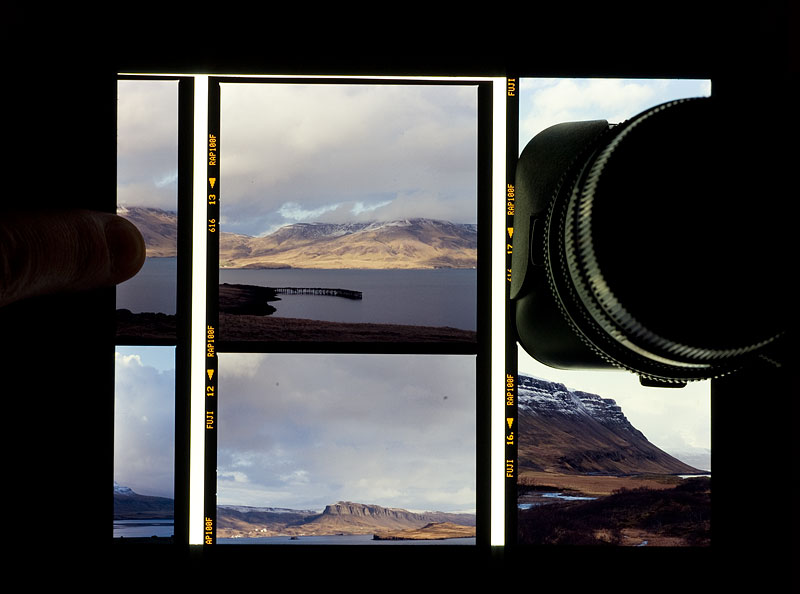efix
RF user by conviction
I don't know if this is the right forum to ask this question, but I hope I can find an answer here. Sorry also for not having the patience to scroll through a dozen pages of topics -- in case the answer can be found somewhere here, I'd appreciate a pointer.
Anyhow, here's my problem.
I recently (re-)developed a passion for shooting film, but this passion only goes so far as to expose it and then have it developed and somehow digitalized. For the latter, I recently acquired an Epson V330 scanner, Epson's low budged photo scanner, as my budget is rather tigh at the moment and I couldn't afford the higher models (V500 or V700).
First, I scanned a roll of HP5+, which turned out okay, considering the price tag of the scanner. Sharpness and contrast were low, but running the files through Lightroom would make them usable for my means (i.e. showing on a PC display and resizing to 1000 pixels for web use).
Then, I wanted to scan a roll of recently exposed Provia 100, and I was seriously underwhelmed. Held against a natural or artificial light source, the slides were simply brilliant, conveying rich colours and tonality. The scanner, though, failed to reproduce anything of that brilliance. Contrast was frighteningly low, and in the darker shades there was as good as no tonality left. Colours were also off, but this could be solved in post-processing.
For illustration, here's an example. First the file as it came from the scanner (using Epson Scan with custom settings), then the Version edited in Lightroom.


As you can see in the original file, the shadows show mainly noise and as good as no tonal differentiation. I had to play A LOT with the curves in Lightroom to get the result in the edited version. Holding the slide against a bright light source would reveal such great tonality and such vivid colours that I'm afraid I just can't live with the results the scanner delivered.
I assume the light source of the scanner simply isn't bright enough to properly illuminate the slide. Would upgrading to a higher model eventually solve the problem, or should transparency film generally not be digitalized with a scanner? What are my options? Mind that I don't have studio equipment, so I can't just illuminate the slide with a big flash and photograph it with a DSLR + macro lens.
Is there a cost-efficient solution to digitalizing slide film in a way that its richness in colour and tonality can be properly reproduced, or will I have to live with what a common flatbed scanner can deliver? Because it seriously spoils the fun about shooting slide film if you can't enjoy your slides in their full splendour afterwards (except of course using a projector and a screen)!
Any help, suggestions, pointers etc. would be greatly appreciated!
P.S.: For comparison, here's a scan of an HP5+ exposure which I'm rather satisfied with, considering the V330's price tag:

Anyhow, here's my problem.
I recently (re-)developed a passion for shooting film, but this passion only goes so far as to expose it and then have it developed and somehow digitalized. For the latter, I recently acquired an Epson V330 scanner, Epson's low budged photo scanner, as my budget is rather tigh at the moment and I couldn't afford the higher models (V500 or V700).
First, I scanned a roll of HP5+, which turned out okay, considering the price tag of the scanner. Sharpness and contrast were low, but running the files through Lightroom would make them usable for my means (i.e. showing on a PC display and resizing to 1000 pixels for web use).
Then, I wanted to scan a roll of recently exposed Provia 100, and I was seriously underwhelmed. Held against a natural or artificial light source, the slides were simply brilliant, conveying rich colours and tonality. The scanner, though, failed to reproduce anything of that brilliance. Contrast was frighteningly low, and in the darker shades there was as good as no tonality left. Colours were also off, but this could be solved in post-processing.
For illustration, here's an example. First the file as it came from the scanner (using Epson Scan with custom settings), then the Version edited in Lightroom.


As you can see in the original file, the shadows show mainly noise and as good as no tonal differentiation. I had to play A LOT with the curves in Lightroom to get the result in the edited version. Holding the slide against a bright light source would reveal such great tonality and such vivid colours that I'm afraid I just can't live with the results the scanner delivered.
I assume the light source of the scanner simply isn't bright enough to properly illuminate the slide. Would upgrading to a higher model eventually solve the problem, or should transparency film generally not be digitalized with a scanner? What are my options? Mind that I don't have studio equipment, so I can't just illuminate the slide with a big flash and photograph it with a DSLR + macro lens.
Is there a cost-efficient solution to digitalizing slide film in a way that its richness in colour and tonality can be properly reproduced, or will I have to live with what a common flatbed scanner can deliver? Because it seriously spoils the fun about shooting slide film if you can't enjoy your slides in their full splendour afterwards (except of course using a projector and a screen)!
Any help, suggestions, pointers etc. would be greatly appreciated!
P.S.: For comparison, here's a scan of an HP5+ exposure which I'm rather satisfied with, considering the V330's price tag:





